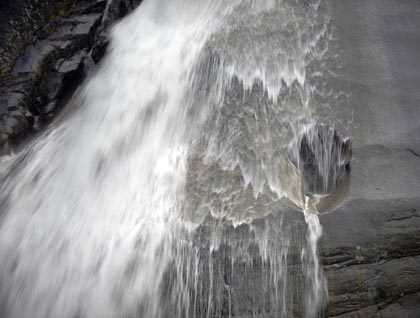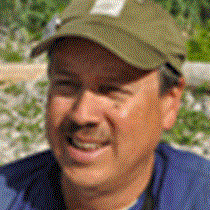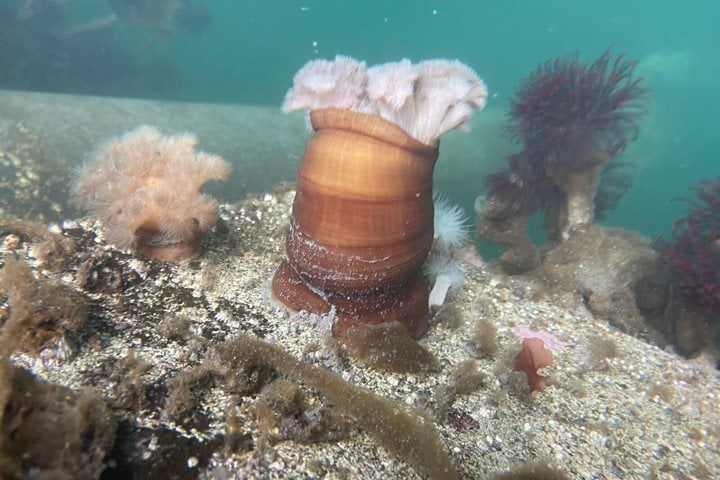This morning we arrived in Tracy Arm, which is a glacially-carved fjord cut into the mainland of Southeast Alaska. During the maximum extent of the last ice age, the glacier extended far down the valley and after the glacier melted, the deep valley was flooded by the sea. The clouds had lifted enough to see the high peaks above, which still contained late-season snowpack. The presence of icebergs floating in the fjord indicated that tidewater glaciers must be nearby. The clear blue color of many of the icebergs made them look like precious gemstones and some icebergs had fanciful shapes that made them appear to be carved by an ice sculptor.
National Geographic Sea Lion rounded the bend and maneuvered close to Hole in the Wall Waterfall. The hole in the hard granitic rock gives the waterfall its name. Sheer granitic cliffs towered above us that were polished and scraped by glacial activity during the Ice Age, which ended only about 10,000 years ago. After our morning briefings, we departed the vessel on inflatable boats for our first hike into the temperate rain forest at Williams Cove.
Some of us hiked along a primitive bear trail through a fairy forest, where the amount of plant life was amazing to experience up close. Vegetation was growing everywhere! We hiked to a muskeg, which is created by fine, impermeable rock debris that is deposited as the glaciers retreat. Water accumulates at the surface, creating a wet habitat that chokes out many of the forest trees. Only about 10% of Alaska is covered by muskeg. Others did a shorter hike into the forest, then went kayaking.
Once back on board, we raised anchor and headed back into Tracy Arm in search of the active tidewater glaciers. The weather was clear and warm—quite an unexpected surprise. We all enjoyed the warm sun and the fabulous glacially-carved vertical walls. We all admired the remarkably exposed evidence of glaciation: glacial striations, bowl-shaped cirques, U-shaped valleys, rounded domes, and hanging valleys complete with waterfalls. Even the high triangular peaks called horns were in clear view. In comparing pictures taken in prior years, both Sawyer Glacier and South Sawyer Glacier have retreated and thinned dramatically in recent years.
When we reached the upper part of the fjord, inflatable boats were launched that allowed us to reach the fjord’s upper reaches and the face of Sawyer Glacier, where many of us were able to observe a large calving episode where a big chunk of the glacier fell into the fjord. As we approached to within a quarter mile of the 200-foot-high face of this massive tidewater glacier, we were impressed by the deep crevasses and blue ice. Harbor seals in the water curiously watched our every move.
In the evening, we exited Tracy Arm and cruised south down Stephens Passage. Shortly thereafter, a pod of orca was sighted and we stayed alongside this group of suspected transient killer whales for quite some time. A gorgeous sunset, the bushy blow of a humpback whale in the distance, and even a partial rainbow seemed like a fitting end to such an incredible day. As darkness slowly dimmed the Inside Passage, we cruised south toward new adventures in this great land.







